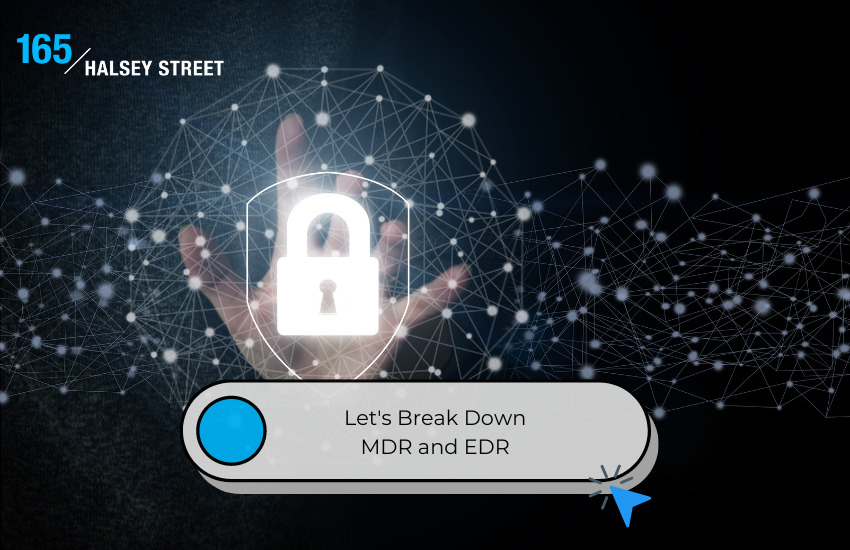MDR and EDR:
Everything You Need to Know About These Cybersecurity Solutions in 5 Minutes or Less
What’s the one issue many organizations have in common? Studies show that companies fall behind with a lack of resources when it comes to being ‘in the know’ of their online security status. Oftentimes, security teams are understaffed and it can become quite a burden to filter through every single security alert that comes through. Ensuring online security is a 24/7 job as time is of the essence, but how can this be accomplished effectively? The solution for many entails hiring a cybersecurity solution service to be on the clock monitoring and responding to threats on your behalf.
There is a multitude of acronyms in the world of cybersecurity, so it’s not easy to keep it all straight. If you’re looking to tighten up your cybersecurity knowledge, 165 Halsey’s blog is the right place for you. As always, our promise is that you emerge with a clearer understanding of these crucial topics in 5 Minutes or Less!
MDR – Managed Detection and Response
MDR is, “a suite of outsourced services allowing organizations to identify, monitor, respond to, and limit the impact of cybersecurity threats. Organizations can deploy these services without building or significantly expanding internal security operations centers and staff to meet the volume and sophistication of these threats.” Essentially, MDR is a 24/7 security control center for an organization that doesn’t have the resources to build or maintain a security ops center of their own. MDR is an excellent form of proactive security.
Benefits Include:
- 24/7 Monitoring from Security Professionals
- Threat Hunting
- Improvement in Threat Detection & Response
- Incident Management, Reporting, & Much More
EDR – Endpoint Detection and Response
If MDR is a managed detection and response, then what is EDR in comparison? Great question! MDR is the broader service that includes the benefits of EDR. Consider the name; EDR focuses on endpoint security to detect threats efficiently and effectively. “Endpoints are increasingly an organization’s first line of defense against cyber threats as companies adopt remote work and bring your own device (BYOD) policies. EDR solutions provide threat detection and response capabilities for these endpoints.” For reference, an endpoint is any device that connects to the internet. Your laptop, cell phone, desktop, iPad, and IoT devices are all examples of endpoint devices. Did you know that a whopping 70% of security breaches begin at endpoints?
Thank you for wrapping up Cybersecurity Month with us. Although most readers are aware of the looming cybersecurity threats these days, there’s a lack of information on how we can defend ourselves and what security responses are available. We read statistics about cyber attacks and worry if our organization is next. Let’s interrupt that thought process. Our best piece of advice to you is that the journey toward keeping your data safe is ongoing. Stay hungry for knowledge, continue to update yourself on the latest trends and technology, and don’t let fear get to you. Stay cool, calm, collected and in control of your online presence. Here for you 24/7, 165 Halsey Street wants to hear from you! We’re proud to provide you with a safe space for your data.
